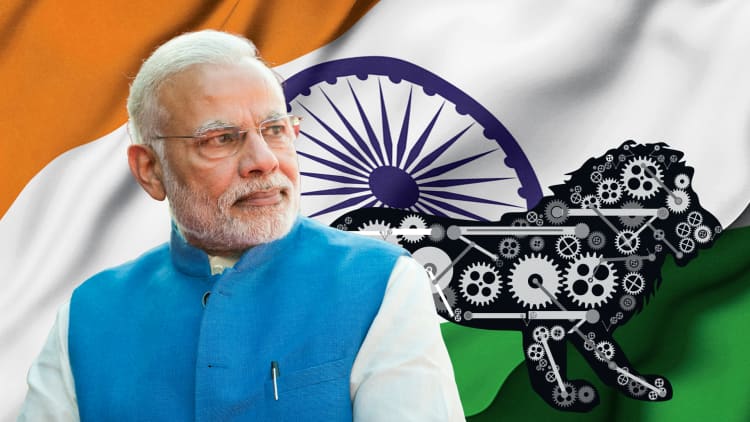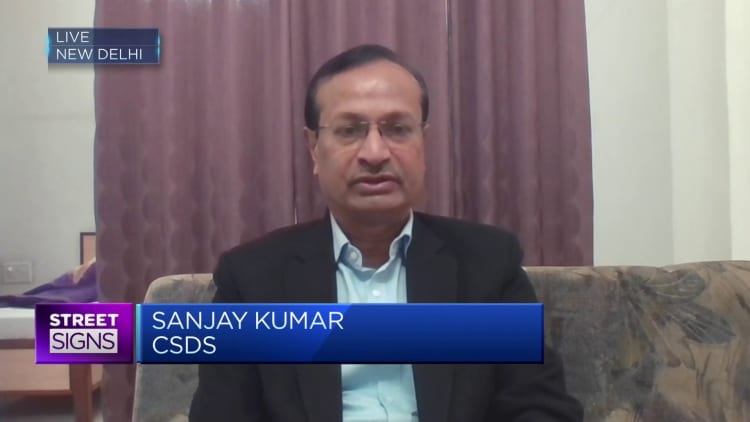
Parliament building in New Delhi, India.
Vipin Kumar | Hindustan Times | Getty Images
India is set to release its interim budget for 2024 on Thursday, ahead of the country’s highly anticipated general elections.
Finance Minister Nirmala Sitharaman will be presenting the pre-election budget for the fiscal year which runs from April 1, 2024 to March 31, 2025.
The interim budget is seen as a stop-gap financial plan during an election year, aimed at meeting immediate financial needs before a new government is formed. The full-fledged union budget will only be released after the elections, which will take place between April and May.
Typically, the interim budget won’t include big and sweeping policy announcements.
But this interim budget is still important, Nomura said in a client note, pointing out it could shed light on the final budget, since many analysts are expecting the ruling Bharatiya Janata Party to win this election.
“The government is in election mode and so there will be tacit targeting of its key constituents, with the interim budget likely to be a political statement,” the bank’s economists said.
Here are the biggest takeaways analysts expect.
Fiscal deficit target
India’s fiscal deficit stands at 6.4% of gross domestic product for the 2023-2024 financial year. The government has said it aims to narrow it by 50 basis points to 5.9% during the fiscal year 2024-2025.
“Will the government meet the 5.9% of GDP fiscal deficit target in FY24? Yes,” analysts at Goldman Sachs said in a note, noting that if spending remained muted in the current quarter, the deficit could even come down to 5.8%.
Goldman also expects higher spending on major subsidies that include the rural employment program.

However, Nilesh Shah, managing director at Kotak Mahindra Asset Management argued that the government would need to work toward meeting its divestment targets before the current quarter ends in March.
The government needs to boost divestment targets through the selling of state-run firms to help meet its fiscal deficit target.
“Unless the central government picks up the divestment receipts in next two months, there is a reasonably good balancing required to meet 5.9%,” Shah warned.
“My feeling is that unless the central government picks up the divestment receipts in the next two months, there is reasonably good balancing required to meet 5.9%,” Shah told CNBC in a phone interview.
India is reportedly set to miss its divestment targets for a fifth consecutive year.
Capital spending
Goldman Sachs has predicted that India will become the world’s second-largest economy by 2075.
As it is, India is already the fifth-largest economy globally, behind the U.S., China, Japan and Germany.
To overtake the rest of the countries to become the No. 2 economy after China, India will have to improve its infrastructure and build better road and railway connectivity.
“The focus towards infrastructure is paramount, and that includes healthcare and education too,” Kranthi Bathini, equity strategist at WealthMills Securities said, elaborating that renewable energy and agriculture are high on the agenda as well.
At last year’s annual budget, the government announced it was boosting infrastructure spending by 33% to 10 trillion rupees ($122.29 billion).
Nomura expects the government to increase capital spending by approximately 36% in the fiscal year 2024-2025, and roughly 16.5% in fiscal year 2025-2026, highlighting it would keep the central government’s capital spending at 3.4% of GDP.
“The focus on public capex has been a deliberate policy choice by the government to address India’s considerable infrastructure deficit and a substitute for lacklustre private capex in the hope that the latter will be eventually ‘crowded in,'” Nomura said.
In a report released by India’s Finance Ministry on Monday, India said it’s poised to become the world’s third-largest economy by 2027 with a gross domestic product of $5 trillion. The finance ministry also said the economy could grow at or above 7% in the fiscal year 2024.
Taxes
Don’t expect significant shifts in taxation as this is only an interim budget, analysts say.
Any introduction of tax benefits such as tax credits or exemptions for investments will be key for those awaiting this budget.
Goldman Sachs expects income tax and corporate tax to grow at around 15% year-on-year.
The investment bank also predicted that indirect taxes could rise 11% year-over-year during fiscal year 2024-2025, since the collection of goods and services tax grew at a healthy pace.
“These kind of announcements can come in this budget since it’s happening just before the elections,” Bathini said, elaborating that there will also be more focus on rural development.
What’s next?
India’s general elections, due to take place in April and May, will decide whether the Modi government is reelected for its third term. Optimism that there will be another victory for India’s ruling BJP and that there will be policy continuity has so far driven up gains for India’s stock markets.
India’s benchmark Nifty 50 index breached 22,000 points in mid-January, after hitting numerous record highs.

Analysts told CNBC previously that the Indian stock markets will not likely rally significantly ahead of the elections, but it could happen if the Reserve Bank of India cuts interest rates in the second half of 2024.
The Reserve Bank of India’s key lending repo rate stands at 6.5%.
“The next brewing debate is on the timing of a shift in the RBI’s policy direction,” said Radhika Rao, senior economist at DBS.
Rao expects the Indian central bank to stand pat on monetary policy until June, before starting to cut interest rates from the third quarter this year, while keeping a close eye on the U.S. Federal Reserve’s policy.
Lower lending rates often boost liquidity and aid risk-taking sentiment in stock markets.
— CNBC’s Naman Tandon contributed to this report.
